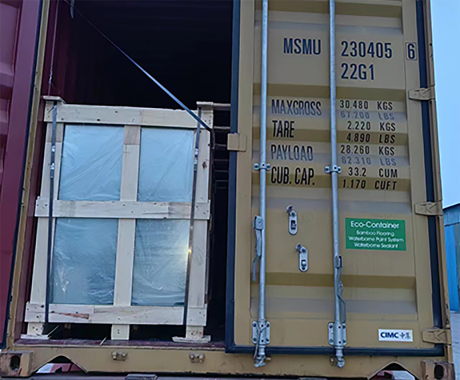

Understanding Low-E 270 Glass The Future of Energy Efficiency
In the realm of modern construction and energy conservation, Low-E (low emissivity) glass has emerged as a game changer in how we build, insulate, and maintain our living environments. One specific type of Low-E glass that has garnered attention is Low-E 270 glass. This innovative glazing solution offers significant advantages in terms of energy efficiency, comfort, and environmental impact, making it an ideal choice for both residential and commercial buildings.
What is Low-E 270 Glass?
Low-E 270 glass is a type of insulated glass that features a specialized coating designed to minimize the amount of ultraviolet (UV) and infrared light that can enter a building without compromising the amount of visible light transmitted. The 270 in its title refers to its performance characteristics, particularly the balance it strikes between heat gain and light transmittance. This glass is particularly effective in reducing solar heat gain while allowing plenty of natural light to illuminate indoor spaces.
Energy Efficiency Benefits
One of the most compelling reasons to consider Low-E 270 glass is its ability to enhance energy efficiency. Traditional single-pane windows can lead to significant energy loss, which in turn drives up heating and cooling costs. Low-E 270 glass, however, forms part of an insulating system that reduces heat transfer. In colder months, it helps retain indoor heat, while during warmer months, it reflects solar energy, keeping interiors cooler. This dual action can translate into significant savings on energy bills and a reduced carbon footprint.
Through its selective filtering of sunlight, Low-E 270 glass also contributes to the overall comfort of indoor spaces. By minimizing glare and maintaining a steady indoor temperature, it helps create a pleasant living and working environment. This can reduce reliance on artificial lighting and HVAC systems, further contributing to energy savings.
Enhanced Durability and Protection

In addition to its energy efficiency credentials, Low-E 270 glass also offers enhanced durability. The coating applied to the glass not only contributes to its low emissivity but also provides a protective barrier against the damaging effects of UV rays. This feature is particularly beneficial for homes and businesses that house artwork, furniture, or other materials sensitive to sunlight. By filtering out harmful UV radiation, Low-E 270 glass helps preserve the integrity and longevity of valuable possessions.
Environmental Impact
As the world becomes increasingly aware of climate change and environmental sustainability, the use of materials such as Low-E 270 glass is gaining traction. Buildings constructed with this type of glazing not only comply with energy efficiency codes but can also qualify for green building certifications. The widespread adoption of Low-E glass contributes to reduced energy consumption on a national scale, making it a vital component in the quest for more sustainable building practices.
Moreover, as urban areas continue to grow, the importance of smart architecture becomes ever more critical. Low-E 270 glass allows architects and builders to design structures that are both aesthetically pleasing and functionally responsible. The integration of this glass into urban environments can help mitigate the urban heat island effect, where urban regions experience significantly higher temperatures than their rural surroundings.
Conclusion
Low-E 270 glass represents a significant advancement in architectural design and energy efficiency. Its unique properties allow for consistent indoor temperatures, reduced glare, and minimized UV damage, all while promoting a sustainable future. As building codes become more stringent and the demand for environmentally friendly solutions rises, Low-E 270 glass is poised to become a standard in energy-efficient heating, cooling, and lighting solutions.
In a world increasingly focused on sustainability, investing in Low-E 270 glass is not just a smart choice for individual homes or buildings; it is a step towards a more energy-efficient, greener future. Through becoming more informed about these advancements, homeowners, architects, and builders can contribute to a more sustainable world while enjoying the many benefits that such innovative materials have to offer.